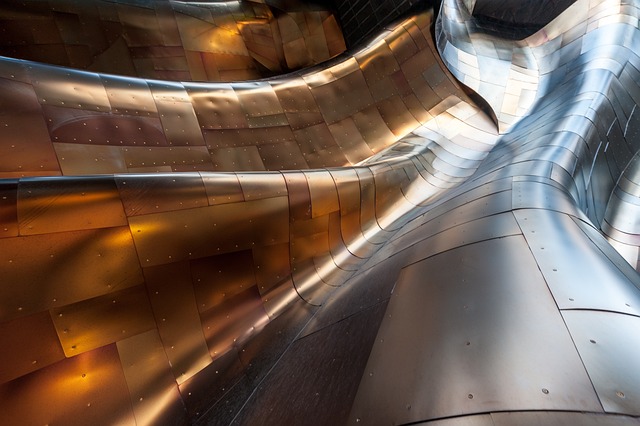Whisper Galleries: The Acoustic Marvels Shaping Modern Architecture
In the realm where art meets science, whisper galleries stand as silent sentinels of sound, captivating architects, acousticians, and curious visitors alike. These architectural wonders, characterized by their ability to transmit whispers across vast distances, have long been shrouded in mystery and intrigue. From ancient cathedrals to cutting-edge museums, whisper galleries continue to shape our built environment, offering a unique blend of acoustic engineering and aesthetic appeal that challenges our perception of space and sound.

The phenomenon behind whisper galleries is rooted in the way sound behaves when it encounters smooth, curved surfaces. As sound waves strike these surfaces, they reflect at angles that cause them to converge at specific focal points. This convergence amplifies the sound, making even the faintest whisper audible across considerable distances. The effect is most pronounced when the source and receiver are positioned at precisely calculated points along the gallery’s curve.
Historical Significance
The concept of whisper galleries dates back centuries, with some of the earliest known examples found in religious architecture. The dome of St. Paul’s Cathedral in London, designed by Sir Christopher Wren in the 17th century, is perhaps the most famous historical whisper gallery. Visitors to the cathedral can experience the acoustic marvel by standing at opposite ends of the dome’s circular walkway, where whispers can be heard clearly across a distance of 112 feet.
These architectural features were not always intentional creations. In many cases, the acoustic properties of domes and circular spaces were discovered after construction, leading to a fascination with their seemingly magical abilities. Over time, architects and scientists began to study and deliberately incorporate whisper galleries into their designs, recognizing their potential for both practical and artistic applications.
Modern Applications
In contemporary architecture, whisper galleries have evolved from curiosities to intentional design elements. Modern architects and acousticians collaborate to create spaces that harness the power of sound reflection for various purposes. Concert halls, for instance, often incorporate curved surfaces to enhance sound distribution and create immersive acoustic environments for audiences.
Museums have also embraced whisper galleries as interactive exhibits, using them to engage visitors and demonstrate principles of physics and acoustics. The Science Museum in London features a purpose-built whisper dish that allows visitors to experience the phenomenon firsthand, sparking curiosity and encouraging exploration of scientific concepts through hands-on interaction.
Technological Advancements
The study of whisper galleries has led to advancements in fields beyond architecture. Researchers in optics and telecommunications have drawn inspiration from these acoustic marvels to develop new technologies. Optical whisper gallery modes, for example, use similar principles to guide and amplify light waves within microscopic structures, with potential applications in sensing, laser technology, and quantum computing.
In the realm of medical imaging, the principles behind whisper galleries have informed the development of advanced ultrasound techniques. By understanding how sound waves behave in curved environments, scientists have improved the resolution and accuracy of diagnostic tools, potentially revolutionizing non-invasive medical procedures.
Challenges and Controversies
Despite their fascination, whisper galleries are not without challenges. The very properties that make them acoustically remarkable can also create issues in public spaces. In some buildings, unintentional whisper gallery effects have led to privacy concerns, as private conversations can sometimes be overheard at distant points due to the unique acoustics of the space.
Architects and designers must also grapple with the balance between acoustic performance and practical functionality. While a perfect whisper gallery might offer an impressive acoustic experience, it may not always align with the primary purpose of a building or space. This has led to ongoing debates about the role of acoustic design in modern architecture and the extent to which it should influence overall building form.
Future Prospects
As our understanding of acoustics and materials science continues to evolve, so too does the potential for whisper galleries in architecture and beyond. Emerging technologies such as 3D printing and advanced computational modeling are enabling designers to create increasingly complex and precise acoustic environments. These tools allow for the fine-tuning of surface geometries and material properties to achieve specific acoustic effects with unprecedented accuracy.
The future of whisper galleries may also lie in their integration with smart building technologies. Imagine spaces that can dynamically adjust their acoustic properties in response to changing needs or environmental conditions. Such adaptive acoustic environments could revolutionize how we experience and interact with built spaces, from concert halls that optimize sound for different types of performances to office buildings that enhance communication while maintaining privacy.
In conclusion, whisper galleries represent a fascinating intersection of art, science, and architecture. From their historical roots in religious buildings to their modern applications in cutting-edge research and design, these acoustic marvels continue to captivate and inspire. As we look to the future, the principles behind whisper galleries promise to shape not only how we build but how we understand and manipulate the invisible world of sound that surrounds us.





